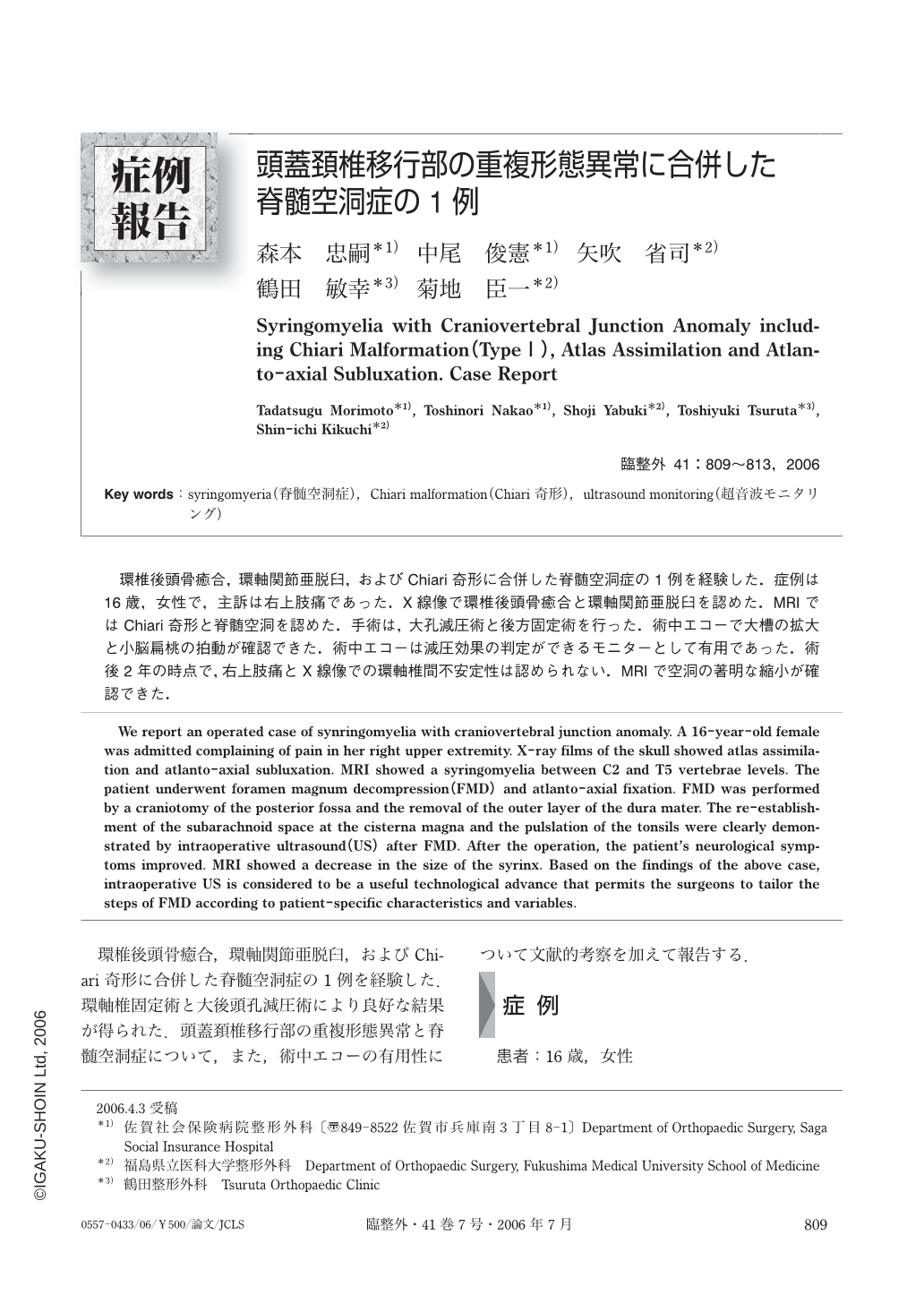Japanese
English
- 有料閲覧
- Abstract 文献概要
- 1ページ目 Look Inside
- 参考文献 Reference
環椎後頭骨癒合,環軸関節亜脱臼,およびChiari奇形に合併した脊髄空洞症の1例を経験した.症例は16歳,女性で,主訴は右上肢痛であった.X線像で環椎後頭骨癒合と環軸関節亜脱臼を認めた.MRIではChiari奇形と脊髄空洞を認めた.手術は,大孔減圧術と後方固定術を行った.術中エコーで大槽の拡大と小脳扁桃の拍動が確認できた.術中エコーは減圧効果の判定ができるモニターとして有用であった.術後2年の時点で,右上肢痛とX線像での環軸椎間不安定性は認められない.MRIで空洞の著明な縮小が確認できた.
We report an operated case of synringomyelia with craniovertebral junction anomaly. A 16-year-old female was admitted complaining of pain in her right upper extremity. X-ray films of the skull showed atlas assimilation and atlanto-axial subluxation. MRI showed a syringomyelia between C2 and T5 vertebrae levels. The patient underwent foramen magnum decompression (FMD) and atlanto-axial fixation. FMD was performed by a craniotomy of the posterior fossa and the removal of the outer layer of the dura mater. The re-establishment of the subarachnoid space at the cisterna magna and the pulslation of the tonsils were clearly demonstrated by intraoperative ultrasound (US) after FMD. After the operation, the patient's neurological symptoms improved. MRI showed a decrease in the size of the syrinx. Based on the findings of the above case, intraoperative US is considered to be a useful technological advance that permits the surgeons to tailor the steps of FMD according to patient-specific characteristics and variables.

Copyright © 2006, Igaku-Shoin Ltd. All rights reserved.


